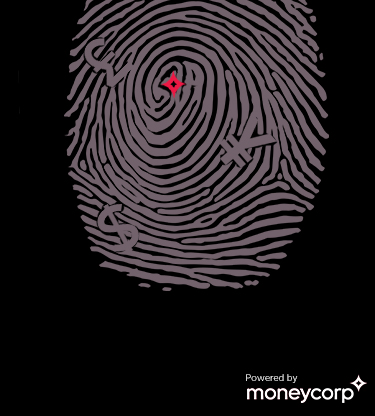The Secret Economist Q1 review – G(rate) expectations
Make sure you sign up to The Secret Economist to receive the very latest guidance straight to your inbox

The fourth quarter ended with concerns growing about the spread of the new Omicron variant of COVID, albeit that, as 2021 came to an end, most governments had opted not to impose a full-scale lockdown on their populations.
12 minute readThe concerns were that the rise in COVID would undermine growth, and there were also concerns about what it would mean for the labour supply, the cost of materials and the levels of business activity.
Q4 also saw a further rise in inflation rates across the globe, a reversal in central bank sentiment so as to bring forward interest rate hike expectations, and additional supply chain disruption was forecast into 2022, when previously most had expected supply chain issues to recede and inflation to peak late in ’21 or early in ’22.
Very few forecasters foresaw major problems for the economic recoveries in ’22, despite the rise in inflation, hawkish shift in monetary policymakers thinking or the drop in consumer confidence that occurred almost under the radar in many major economies.
Virtually nobody predicted that early ’22 would not be dominated by COVID but rather by the return of conflict in Europe, with Russia launching a full-scale invasion of Ukraine only days after the closing ceremony of the Beijing Winter Olympics. The consequences of that invasion, the levying of sanctions on Russian government officials, wealthy individuals and private and state-owned companies, are yet to fully affect global macroeconomic indicators. It appears to be almost a forgone conclusion though that growth will be far weaker in ’22 than previously predicted, and inflation higher for longer also.
The worsening in geopolitical stability, further fracturing of global supply chains, dash for raw materials and energy, higher interest rates and reductions to investment spending and household disposable incomes leave the global economy in a far more fragile state as we end Q1. Could Q2 be even worse?
UK Q1 2022 – Bank of England swing from hawk to dove as geopolitics dominates risks
After Q4 closed on a low ebb, with restrictions in place across the UK because of COVID, Q1 began in more upbeat mood, with signs that the government’s gamble to not impose another lockdown had paid off. The caseload numbers were high, and hospital admissions began to climb, but the numbers seriously ill with COVID were remarkably low. Surveys improved in terms of manufacturing, construction and services activity, but there was still a worsening in consumer confidence as consumer and retail price inflation hit 30-year highs.
Hints that all was not as positive as it had previously appeared to be were confirmed with the accelerated deterioration in consumer confidence towards the end of February, when Russia’s decision to invade Ukraine prompted a sharp rise in oil and natural gas prices. By then OFGEM had already announced a close to 50% increase in energy price cap, amidst numerous dual fuel suppliers going out of business. The squeeze on household incomes began to permeate Bank of England thinking, and quickly they reversed course in terms of signalling (February had seen a 5-4 vote in favour of a 0.25 percentage point increase in the Bank rate with four members voting for an immediate 0.5% rise. By March, the vote had switched to 8-1 in favour of a 0.25% hike, with Jon Cunliffe voting for rates to be left on hold!).
Labour markets remained tight, albeit data for December and January pointed to some short term COVID related weakness in employment, whilst average earnings growth picked up in January but wages continued to lag well behind headline consumer or retail price inflation growth. At least the UK economy finally recorded output back above pre-pandemic levels, with a bounce back in January taking the index to 100.7, above the 100.3 recorded in January 2020. Two years of lost activity though still means the UK economy is likely 3-5 percentage points short of potential output levels.
Interest rate expectations adjusted lower initially on the outbreak of conflict in Europe and the rise in commodity prices surrounding that. However, the financial markets still expected UK interest rates to rise to around 1.75% by the end of 2022 by the end of Q1, a further 1 percentage on top of where interest rates currently are. That despite an additional collapse in consumer confidence in March, to its lowest reading since late 2020, and weaker retail spending in February retail sales figures.
As for the pound, it enjoyed a rollercoaster against the US dollar and euro. Against the US dollar, the early stages of January, and again in February, looked promising, with the pound heading back towards the high $1.30s, reaching a peak of $1.3749 in mid January, but by the middle of March a break of $1.30 looked far more likely, albeit that level wasn’t breached. Against the euro, the pound rallied to a high of €1.2191 in early March, initially on interest rate hike expectations, but then as fears grew about a broader European conflict after Russia’s invasion of Ukraine. Again, the pound failed to sustain the gains, although remained close to €1.20 as we ended the quarter.
My opinion is that the risks of sustained cost push inflation pressures that will prompt a sharp reduction in net disposable incomes, will damage interest rate expectations in Q2, thereby also damaging sentiment surrounding the currency. Geopolitical risks also could create further financial market volatility, as well as additional downside risks to the macroeconomic outlook. We didn’t get the test of €1.15 in Q1 as I had suspected we would, but we did test $1.30. For Q2, £/€ is likely to push lower towards €1.16 and possibly €1.15, but if there is a further escalation in the Russia/Ukraine conflict, the euro could come under renewed short-term pressure. As for £/$, renewed tests lower are more likely, with the Federal Reserve seemingly getting more aggressive on monetary tightening requirements. I fear that $1.27/1.28 will prove insufficient to hold the downside risks, and a push towards $1.25 will occur over Q2.
The Federal Reserve – ignoring the soft signals
The first quarter of 2022 has seen another upward shift in monetary policy tightening expectations. The driving force behind these has been a combination of higher inflation and also a resurgence in hiring, which has seen the US jobs market gain more than 1.15m additional payrolled employees in the first two months of year. Furthermore, most of the activity surveys from the US whilst volatile, have suggested ongoing robust activity in Q1.
The news hasn’t all been positive though. The payrolls data also confirms that real earnings are dropping, with inflation rates comfortably outstripping rates of nominal average earnings increases in the first few months of 2022, and inflation now set to peak higher than previously predicted, somewhere in the region of 8.5-9% according to latest estimate.
Nobody really believed that Russia would invade the Ukraine, nor indeed had they prepared themselves for what additional sanctions on the Russian regime would mean for already fractured supply chains and energy supplies. The rise in oil prices, to within a whisker of $140 per barrel, and natural gas prices hitting all-time record highs at tens of multiples normal pricing levels could mean a significant downshift in consumer demand. This is true even in the US, which is better insulated from the effects of higher energy prices than most developed Western economies.
The Federal Reserve introduced the first-rate increase since 2018, taking the upper bound of the targeted Fed Funds rate to 0.5% in March. They also promised faster hikes, if necessary, with the dot plots (a summary of all FOMC members views on interest rates), suggested a further 5-6 hikes in 2022, but only assuming those were of 25 basis points each. The Chair of the Federal Reserve, Jerome Powell, and a number of other FOMC members seemed to indicate that they would support ½ point hikes in official rates if merited by the data.
However, all is not as robust as it appears. Home sales data, undoubtedly affected by rising interest rates, has taken a turn for the worse, and consumer confidence has dropped sharply over Q1 2022, having fallen throughout the second half of 2021. The soft signals from the economy suggest that the outlook is more fraught with downside risk than perhaps the Fed are prepared to recognise.
As for the US dollar, having gained more than 1.4% in Q4 ’21, it enjoyed a 3%+ gain in Q1 ’22 on a trade weighted basis. Specifically, against the UK pound, it gained more than 2.5%, more than 3% against the euro and over 6% against the Japanese yen. The dollar appreciation has been assisted by the deterioration in geopolitical relations between the West and Russia, but there also remains concerns over the spread of COVID, equity market valuations, and credit quality in China. Whilst be no means a comprehensive list of concerns as far as the global economy or financial markets are concerned, those few play into the hands of US dollar buyers, who will readily state its safe-haven status as reason for further gains.
In Q2, the dollar can make additional further headway higher against other majors. It may also benefit from a sharp adverse turn in activity in emerging markets also.
European Central Bank slips into more hawkish territory
The Euro Area got off to a slow start in Q1, bogged down by Covid restrictions across many major economies and sectors. However, the news on activity began to improve in the middle of the quarter, with a recovery in manufacturing and services activity registered by the PMI surveys, and some signs of an improvement in business expectations also. The start of Russia’s invasion of Ukraine put paid to that though, and by the end of the quarter, surveys such as the German ZEW and IFO had dropped very sharply, with ZEW and IFO expectations back to levels not seen since the pandemic outbreak.
Meanwhile, the European Central Bank indicated that they were open to the idea of returning interest rates to at least zero, meaning that the deposit rate could rise by 50 basis points over the second half of 2022, or by Q1 2023. The ECB did suggest though that this would be dependent on the economic data and surveys, and after the collapse in Euro Area consumer confidence this sudden hawkish lurch may prove to be a threat the ECB won’t carry out.
That is despite the fact that Euro Area inflation continued to rise over the course of Q1, with the headline and core consumer price inflation rates rising to 5.8% and 2.7% in February. The likelihood is that headline inflation will peak at between 7-7.5%, but could remain elevated for far longer than was previously expected because of heightened geopolitical risk. Don’t underestimate the risks of Covid restrictions being reintroduced or the effects of rising infections elsewhere creating renewed supply chain disruptions.
The euro’s poor performance persisted through Q1 2022, even with the ECB’s hawkish shift in tone. The sheer geographical proximity of the Ukraine invasion to the Euro Area’s border, the change in stance from Germany to boost defence spending, and the risks to activity from major euro countries dependence on Russian oil and gas all outweighed a small shift in the ECB’s language. There are more downside risks to the euro in Q2, with any meaningful progress on a ceasefire between Russia and Ukraine a hope, rather than an expectation. €/$ risks are back towards $1.07 or even $1.05, with the upside limited into the $1.1250 region.
What has Q1 taught us? In the Q4 review I said that we can never be complacent about recovery, inflation or central bank action. That is doubly true after Q1 2022. The rise of geopolitical risks, to replace Covid as financial markets number one concern took virtually everyone by surprise. Here is the thing though, the risks of Covid haven’t disappeared. The are several cliff-edges for the global macroeconomy to fall off. It is therefore my contention that currency markets aren’t as volatile as they ought to be given those risks. There are downside risks to £/$, £/€ and €/$, with the pound being under the greatest potential strain.
We may look back on Q1 as a period of relatively low market volatility, with the coming quarters of 2022 posing far greater challenges to markets and businesses.
Key messages
- Dollar strength to persist as interest rate environment and geopolitical uncertainty support the risk off environment.
- GBP at risk if Bank of England disappoints rate hike expectations.
- Geographical proximity of Ukraine to Euro Area’s borders threatens additional short term euro downside against the US dollar.


